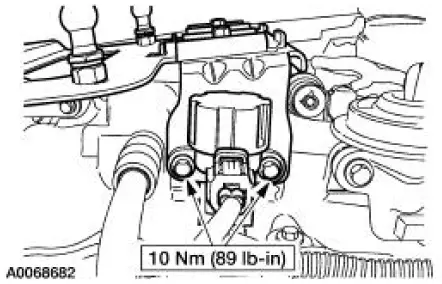Ford Mustang (1999-2004) Service Manual: Exhaust Gas Recirculation (EGR) Vacuum Regulator Solenoid
Mach I vehicles
1. Remove the air intake scoop. For additional information, refer to Section .

All vehicles
2. Remove the exhaust gas recirculation (EGR) vacuum regulator solenoid.
- Disconnect the electrical connector.
- Remove the bolts.
3. To install, reverse the removal procedure.
 Differential Pressure Feedback Exhaust Gas Recirculation
(EGR) System
Differential Pressure Feedback Exhaust Gas Recirculation
(EGR) System
Removal and Installation
1. NOTE: The 4.6L (2V) is shown. The 4.6L (4V) and 3.8L are
similar.
NOTE: Bolts may be used in place of nuts on some applications.
Remove the differential pressure fee ...
 Positive Crankcase Ventilation (PCV) Hose
Positive Crankcase Ventilation (PCV) Hose
Removal and Installation
1. Disconnect the hose on the PCV valve.
2. Twist and remove the PCV valve.
3. To install, reverse the removal procedure.
...
Other materials:
Special Operating Condition Requirements
When towing a trailer or using a camper or car-top carrier:
Change engine oil and install a new oil filter every 4,800 km (3,000
miles) or 3 months.
Change transfer case fluid every 96,000 km (60,000 miles).
Change manual transmission fluid as required.
...
Audible warnings and indicators
Key In Ignition Warning Chime
Sounds when the key is left in the ignition in the off or accessory
position and the driver’s door is opened.
Keyless Warning Alert (If Equipped)
Sounds when the keyless vehicle is in RUN and the driver’s door is
opened.
Hea ...
Symptom Chart
Condition
Possible Sources
Action
Dogtracking
Excessive rear
thrust angle.
Front or rear
suspension
components.
Drive axle
damaged.
CHECK the wheel alignment.
ADJUST as necessary
INSPE ...
